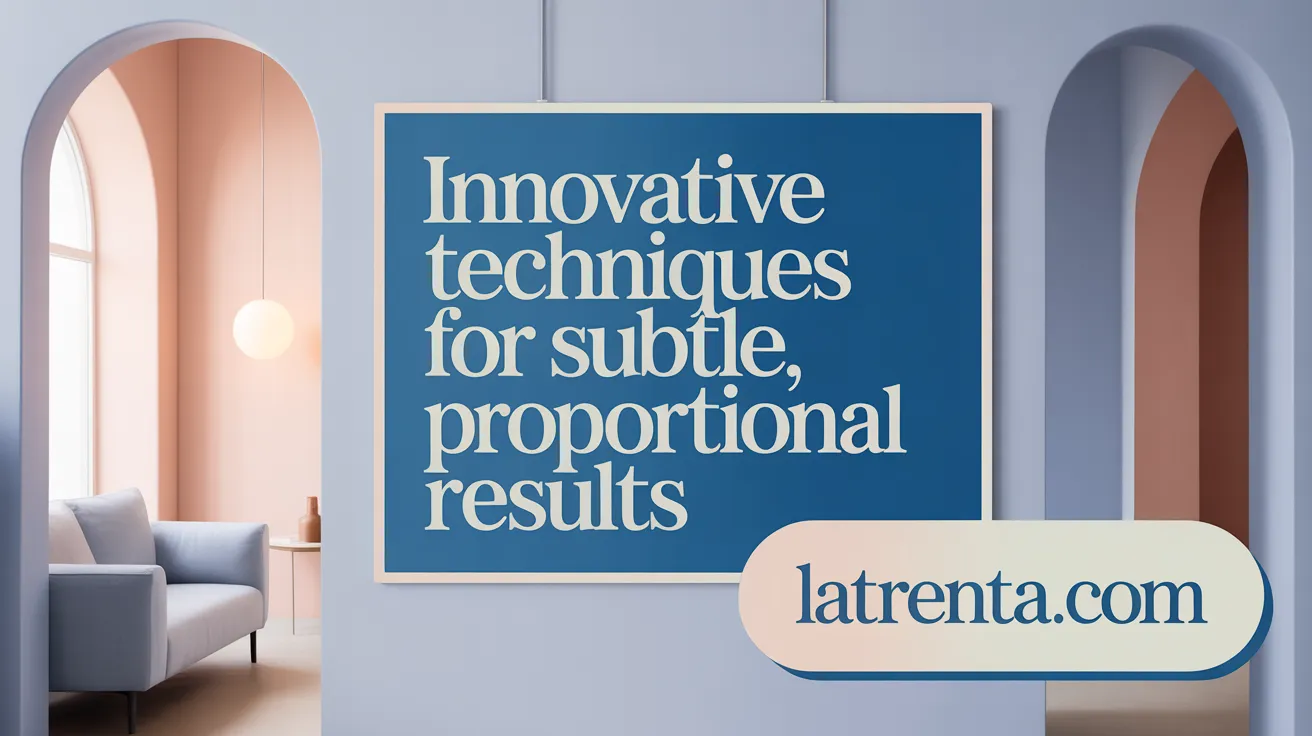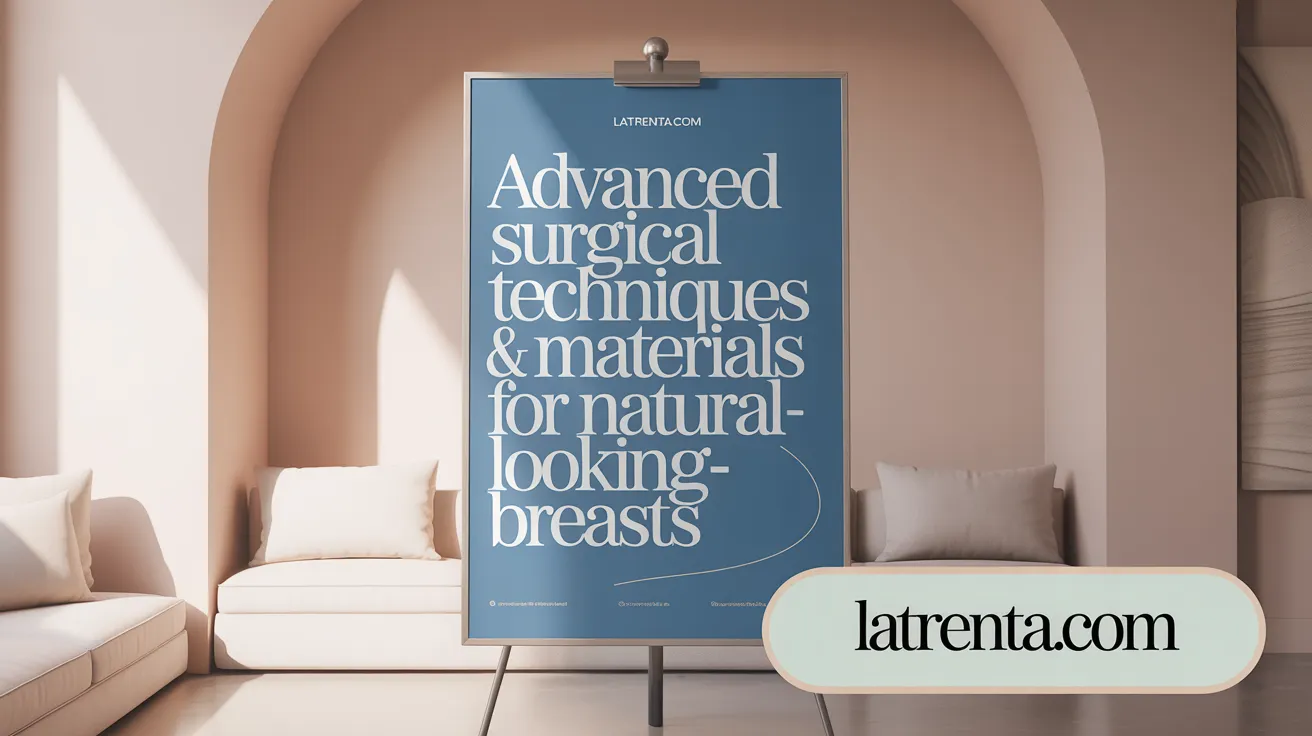Understanding the Shift Towards Natural Aesthetics in Breast Surgery
In recent years, aesthetic breast surgery has undergone a transformative evolution, emphasizing natural, subtle enhancements rather than dramatic changes. This shift reflects broader cultural trends that favor proportion, harmony, and authenticity. Advanced technologies, innovative implant materials, and refined surgical techniques now allow patients to achieve breast enhancements that complement their unique anatomy and lifestyle. This article explores the current trends and cutting-edge innovations that are shaping breast surgery practices focused on achieving natural-looking results, looking closely at techniques, materials, safety, and patient preferences.
Current Trends and Innovations in Achieving Natural Breast Aesthetics

What are the current trends and innovations in aesthetic breast surgery aimed at achieving natural results?
In recent years, the focus of breast augmentation has shifted heavily toward creating a natural appearance that complements the overall body harmony. One of the main trends is the preference for small-volume implants, usually under 400 cc, which allow for subtle enhancement rather than dramatic size increases. Patients often choose sizes between 220 cc and 375 cc to maintain a proportionate and natural look.
Surgeons achieve natural results through various sophisticated techniques. Dual-plane implant placement, where the implant is positioned partially under the muscle, helps create a more natural contour and facilitates movement that mimics natural breast tissue. Precise pocket dissection, along with selecting appropriate implant widths and projections, ensures that the implants harmonize with the patient’s body shape.
Innovations in implant technology further support these goals. Anatomically shaped cohesive gel implants, such as the Style 410, maintain their natural teardrop shape and are designed to decrease the risk of gel migration and rupture. Modern silicone gel implants, including those from brands like Motiva and Mentor, feature advanced cohesive gels that provide a soft, natural feel and long-term durability.
Fat grafting has become an increasingly popular natural alternative or complement to implants. This technique involves harvesting fat from areas like the hips, abdomen, or thighs, purifying it, and injecting it into the breasts. It offers a soft, organic feel and improves contour and symmetry, often used for subtle volume enhancements.
Hybrid procedures combining implants with fat transfer are gaining popularity. These approaches allow for a customized aesthetic, improving tissue coverage, softness, and long-term stability. Patients benefit from natural-looking results that feel and move like tissue—enhancing confidence and satisfaction.
Advanced imaging and personalized surgical planning using 3D technology and AI tools are now standard. These allow surgeons and patients to visualize the end result in detail beforehand, ensuring alignment of expectations and individualized solutions. This tailored approach considers lifestyle, anatomy, and aesthetic goals to produce harmonious outcomes.
Overall, modern breast augmentation emphasizes safety, longevity, and a natural look, reflecting a cultural shift toward authenticity and body positivity. Innovations continue to evolve, promising even more refined results that prioritize patient-specific beauty.
Techniques and Materials Driving Natural-Looking Breast Enhancements
 Achieving a natural-looking breast enhances involves a combination of advanced techniques and innovative materials tailored to each patient’s anatomy and aesthetic goals.
Achieving a natural-looking breast enhances involves a combination of advanced techniques and innovative materials tailored to each patient’s anatomy and aesthetic goals.
One popular technique is the use of anatomical, teardrop-shaped silicone implants. These implants are designed to mimic the natural contour of the breast, providing a more organic appearance. Surgeons often place these implants in the submuscular position (beneath the chest muscle), which offers better coverage, reduces rippling, and creates a more natural slope.
Modern implant materials include cohesive silicone gel and gummy bear implants. These implants are made with a highly stable silicone that remains cohesive even if the shell ruptures, reducing the risk of gel migration and ensuring a soft, natural feel. Gummy bear implants also maintain their shape well over time, providing long-lasting aesthetic results.
Fat transfer breast augmentation is an increasingly popular natural alternative or adjunct to implant surgery. This technique involves liposuction from areas like the hips, abdomen, or thighs, purifying the harvested fat, and then precisely injecting it into the breasts. This approach offers subtle volume enhancements, improved contour, and a very natural feel, especially beneficial for patients seeking minor size increases.
In addition to individual techniques, surgeons select implant placement carefully. Submuscular placement is favored for those desiring a natural look, as it provides better contour and minimizes visible implant edges.
Hybrid procedures that combine breast implants with fat transfer are also trending. These methods allow for tailored augmentation, creating softer, more natural results with better tissue integration and reduced visible implant edges.
Modern implant designs that mimic natural tissue further enhance aesthetics. Advances include textures, shapes, and cohesive gels that resemble real breast tissue, improving the overall feel and appearance. Some implants also incorporate smart technology, such as biosensors, to monitor potential complications, reflecting ongoing innovation.
Overall, the combination of precise surgical techniques, advanced implant materials, and personalized treatment planning enables surgeons to produce natural, proportionate, and harmonious breast enhancements that align with individual patient preferences.
Cultural Influences and Aesthetic Preferences Shaping Breast Surgery Trends
What factors contribute to the increasing preference for natural-looking breast procedures?
The growing demand for natural-looking breast enhancements is driven by a cultural shift towards celebrating subtlety and athletic aesthetics. Society and media increasingly favor authenticity, leading patients to seek results that enhance their natural beauty rather than dramatic transformations. Advances in surgical technology, such as the development of cohesive silicone gel implants that mimic tissue softness and shape, allow for more organic outcomes.
Patients now have greater access to information about surgical options, including implant selection, precise placement, and less invasive techniques like fat grafting. These choices help achieve hydrated, proportionate breasts that align with personal body types like BMI, age, and lifestyle preferences.
Surgeons’ expertise likewise plays a critical role. Meticulous attention to detail ensures preservation of natural function, sensation, and aesthetics, reinforcing the trend towards results that look and feel authentic.
How have aesthetic preferences, such as athletic and subtle results, influenced breast surgery trends?
Preferences for athletic and understated outcomes have revolutionized the approach to breast surgery. In response, surgeons now favor minimally invasive techniques with smaller, anatomically shaped implants designed to complement individual contours.
Fat transfer procedures are increasingly popular for achieving a soft, natural look. These techniques also support body harmony by contouring other areas like hips or abdomen while providing subtle breast volume increases.
Placement options like submuscular or dual-plane positioning are favored for active lifestyles because they maintain natural movement, reduce recovery times, and allow patients to stay active. Additionally, personalized 3D imaging and AI-assisted planning enable tailored surgeries that meet specific aesthetic and functional goals.
Overall, these evolving preferences emphasize understated beauty, harmonized with each person’s unique physique, and support active, healthy lifestyles while delivering aesthetically pleasing results.
Recent Advancements and Emerging Practices for Natural Breast Augmentation

What recent advancements and emerging practices are promising in breast augmentation for natural outcomes?
The landscape of breast augmentation is rapidly evolving, with a strong focus on delivering results that look and feel natural. One of the most notable innovations is the development of next-generation silicone implants. These include cohesive gel models such as Motiva’s TrueTissue implants, which mimic natural breast tissue through soft, form-stable silicone that offers both aesthetic appeal and enhanced safety.
Lighter implant technology is also gaining popularity. Newer designs aim to reduce implant weight, decreasing stress on breast tissue and providing a more comfortable, natural sensation. Moreover, bio-integrative implant surfaces are being introduced to improve tissue integration and minimize complications like capsular contracture. These bioactive surfaces encourage tissue adherence and enhance long-term stability.
In addition to advancements in implant materials, digital planning tools are revolutionizing surgical precision. AI and 3D imaging systems, such as Crisalix 3D and VECTRA 3D, allow surgeons and patients to visualize potential outcomes before surgery. This technology ensures a tailored approach that considers individual body proportions, leading to more predictable and satisfying results.
Minimally invasive surgical techniques are continuously refined. Smaller incisions, endoscopic techniques, and less tissue disruption contribute to faster recovery, minimal scarring, and less postoperative discomfort. These approaches often involve precise pocket dissection and placement, usually under the muscle (dual-plane) for more natural movement.
Hybrid procedures combining different methods are increasingly popular. For example, combining small, shape-specific implants with fat transfer allows for subtle volume enhancement and contour refinement. Fat grafting, derived from liposuction of other body areas, offers a natural alternative or complement to implants, especially appealing for patients seeking a softer, more organic look.
Overall, these innovations collectively push toward achieving natural, proportionate results that align with contemporary preferences for body harmony. Surgeons’ expertise in personalized planning and meticulous execution remains essential to unlocking the full potential of these emerging practices.
Safety Innovations and Considerations in Natural Breast Enhancement

What safety considerations and innovations are associated with natural breast enhancement techniques?
Ensuring patient safety is paramount in all natural breast enhancement procedures. Proper candidate selection, thorough preoperative evaluation, and procedure planning are essential for optimal outcomes. Surgeons must be experienced and certified, with a deep understanding of anatomy and the latest techniques.
Safety concerns such as implant rupture, capsular contracture, and fat necrosis are actively addressed through technological innovations. The development of highly cohesive silicone gel, known as "gummy bear" implants, has significantly improved safety profiles. These implants retain their shape even if ruptured, reducing the risk of leakage and migration.
Surface texture and shell design have also advanced. Textured surfaces help prevent rotation, especially in anatomical implants, while smooth shells reduce the risk of capsular contracture. Modern surgical techniques, including minimally invasive incisions and controlled dissection methods, reduce tissue trauma, resulting in fewer complications.
The integration of 3D imaging and AI-assisted planning enhances surgical accuracy, allowing for customized procedures tailored to each patient's unique anatomy. These technologies also facilitate better risk assessment and patient education, contributing to safer outcomes.
Fat grafting has gained popularity for its natural results and safety profile. It uses the patient’s own fat, harvested through liposuction, purified, and injected to restore volume and contour. This autologous method minimizes the risk of allergic reactions or implant-related issues.
Long-term monitoring protocols are vital. Regular imaging, like MRI or ultrasound, helps detect silent ruptures early. Manufacturers are also exploring biosensors embedded in implants to provide real-time alerts for complications.
Patient selection involves considering factors such as tissue quality, lifestyle, and health status. Surgeons emphasize the importance of choosing the right candidate for each technique, ensuring safety and satisfaction.
In summary, innovations in implant materials, surface and structural design, surgical approaches, and monitoring technologies continue to enhance the safety of natural breast enhancement procedures. These advancements aim to provide patients with durable, aesthetic, and worry-free results.
The Future of Breast Surgery Embracing Natural and Personalized Aesthetics
The landscape of breast surgery is clearly advancing toward a future where natural beauty and patient individuality take precedence. Through integrating innovative implant materials, refined surgical techniques, and advanced planning technologies, practitioners can deliver results that harmonize with each patient’s body and lifestyle. The preference for subtle, balanced enhancements reflects changing cultural ideals and a growing appreciation for authenticity and proportion. Safety remains paramount as technologies evolve to minimize risks and enhance long-term outcomes. As we look ahead, breast surgery will continue to meld artistry with science, offering patients personalized, natural-looking results that enhance confidence and well-being.
References
- Aesthetic Breast Surgery: Emerging Trends and ...
- Discover Top 5 Breast Augmentation Trends for 2025
- Small-volume breast augmentation: A natural and subtle ...
- Breast Augmentation Trends: Embracing Natural, Balanced ...
- Breast Augmentation Trends | Palm Beach, FL
- Breast Augmentation Trends: Embracing Smaller, Natural- ...
- The top seven plastic surgery trends for 2025
- Breast Augmentation Trends in 2025 - Philadelphia, PA
- Natural Breast Augmentation: A Personalized Approach for ...
- Breast Augmentation Trends in 2025: What Phoenix Patients ...
